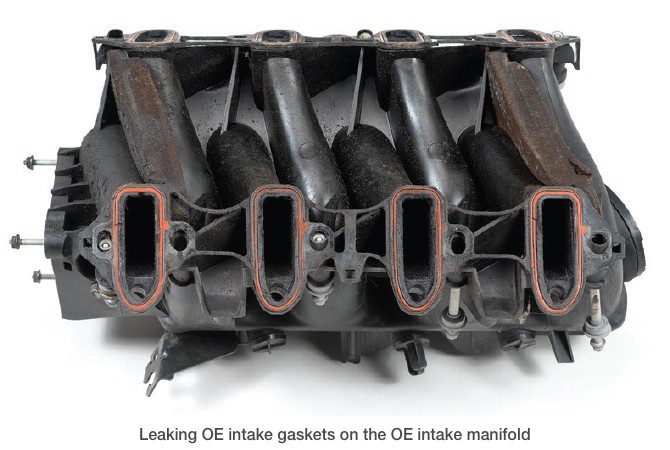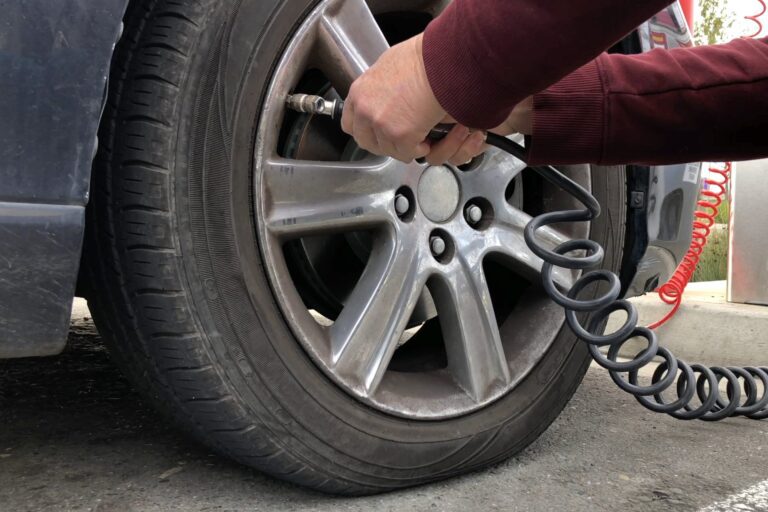Leaking Exhaust Manifold: Troubleshoot and Fix the Issue Like a Pro
A leaking exhaust manifold can cause various issues and should be addressed promptly. When left untreated, it can lead to poor engine performance, increased emissions, and potential damage to other engine components.
In addition, the leak can result in loud noises, decreased fuel efficiency, and even an unpleasant smell inside the vehicle cabin. It is crucial to bring your car to a professional mechanic who can accurately diagnose and repair the issue to ensure optimal engine function and safety on the road.
Recognizing The Symptoms Of A Leaking Exhaust Manifold
Recognizing the Symptoms of a Leaking Exhaust Manifold:
- Smell of Exhaust Gas in the Cabin: One of the most common signs of a leaking exhaust manifold is the smell of exhaust gas inside the cabin. If you suddenly start noticing an unpleasant odor, similar to that of rotten eggs or sulfur, it could indicate a leak in the manifold.
- Engine Performance Issues: Another symptom of a leaking exhaust manifold is engine performance issues. You may experience a decrease in power and acceleration, rough idling, or even stalling. This is because a leak in the manifold can disrupt the air-fuel mixture, affecting the overall performance of the engine.
- Loud and Unusual Exhaust Noise: A leak in the exhaust manifold can also result in loud and unusual exhaust noise. You might hear a hissing or ticking sound coming from the engine area. This noise is caused by the leaking gases escaping from the manifold.
Understanding The Function Of The Exhaust Manifold
The exhaust manifold is an integral component of a vehicle’s exhaust system. It serves the crucial function of collecting and directing the exhaust gases from the engine’s cylinders to the exhaust pipe. By doing so, it plays a vital role in maintaining the performance and efficiency of the engine.
The exhaust manifold connects directly to the engine, typically near the cylinder head, using specialized gaskets to ensure a tight seal. This connection allows the manifold to collect the exhaust gases emitted during the combustion process and channel them towards the exhaust system.
An important aspect of the exhaust manifold is its role in directing the exhaust gases away from the engine, preventing them from interfering with the combustion process. By efficiently removing these waste gases, the manifold helps to improve engine performance, reduce fuel consumption, and minimize harmful emissions.
Overall, the exhaust manifold is a critical component of a vehicle’s exhaust system. Its proper functioning is essential for maintaining the efficiency, performance, and environmental friendliness of the engine.
Conducting A Visual Inspection
Conducting a Visual Inspection:
- Identifying Visible Cracks or Damage: Begin your inspection by visually examining the exhaust manifold. Look for any visible cracks, holes, or damage on the surface. Pay attention to the joints and corners where cracks are more likely to occur. Use a flashlight if needed to ensure proper visibility.
- Checking for Loose Fasteners: As you inspect the manifold, check for any loose or missing fasteners. Loose bolts or nuts can cause leaks and affect the performance of the exhaust system. Ensure that all fasteners are securely tightened and in good condition.
- Examining Gasket Condition: The gasket plays a vital role in sealing the exhaust manifold properly. Inspect the gasket for signs of wear, damage, or deterioration. Look for any discoloration, cracks, or tears. If the gasket is in poor condition, it should be replaced to prevent further leaks.
Note: Regular visual inspections can help identify issues with the exhaust manifold in a timely manner. If you notice any significant cracks, damage, or loose fasteners, it is advisable to seek professional assistance for necessary repairs or replacement.
Performing A Leak Test
To perform a leak test on a leaking exhaust manifold, there are a few methods you can use. One commonly used method is utilizing a smoke machine. By feeding smoke into the exhaust system, you can visually identify any leaks. Another method is applying a soapy water solution to the exhaust manifold and observing for bubbling or escaping smoke. Both of these techniques are effective in pinpointing the exact location of the leak. Once you have identified the leak, you can proceed with the necessary repairs. Regular maintenance and inspections of the exhaust manifold are important in order to prevent further damage to the vehicle’s engine and ensure proper functioning of the exhaust system. Keep in mind that consulting a professional mechanic is always recommended for complex issues or if you are unsure about performing the test yourself.
Replacing Damaged Or Worn Gaskets
Replacing Damaged or Worn Gaskets
Gathering Necessary Tools and Materials
If you notice a leaking exhaust manifold, it’s crucial to replace the damaged or worn gaskets as soon as possible to prevent any further damage to your vehicle. To undertake this task, you will need to gather a few essential tools and materials. Firstly, ensure you have a ratchet or wrench set to loosen and tighten bolts securely. Additionally, a gasket scraper or a putty knife will be required to remove the old gasket material effectively. It’s also important to have a new gasket, which can be purchased from an auto parts store or ordered online. Lastly, don’t forget to have a torque wrench on hand to properly tighten the bolts once the new gasket is in place.
Removing the Exhaust Manifold
Installing New Gaskets
To replace the gasket, begin by removing the exhaust manifold from the engine. Carefully loosen and remove the bolts securing the manifold to the engine block using a ratchet or wrench. Once the manifold is detached, use a gasket scraper or putty knife to clean the mating surfaces on both the manifold and the engine block. Next, position the new gasket onto the engine block, aligning it with the exhaust ports. Carefully place the manifold back onto the gasket and align the bolt holes. Finally, hand-tighten the bolts before using a torque wrench to ensure they are properly tightened to the manufacturer’s specifications. Taking these steps will allow for a successful replacement of the exhaust manifold gaskets.
Repairing Cracks Or Holes In The Exhaust Manifold
When your exhaust manifold starts to leak, it is crucial to repair the cracks or holes it may have. The first step in this process is identifying the extent of the damage. Inspect the exhaust manifold carefully and look for any visible cracks or holes. Pay attention to the sound coming from the exhaust, as a leaking manifold may produce a distinct noise.
Once the damage is identified, you can start the repair process. One popular method is applying exhaust repair paste. This paste is specifically formulated to withstand high temperatures and seal cracks. Clean the area around the damaged spot and apply the paste according to the manufacturer’s instructions.
If the damage is more severe, you may consider utilizing high-temperature epoxy. This epoxy is designed to withstand extreme heat and create a permanent seal. Clean and dry the affected area before applying the epoxy. Follow the package instructions carefully to ensure proper adhesion.
Using A Manifold Repair Kit
The purpose of a manifold repair kit is to seal any leaks in the exhaust manifold of a vehicle. This is important because a leaking manifold can negatively affect the performance and efficiency of the engine. By understanding the purpose of a repair kit, you can effectively use it to fix the issue.
Steps To Follow For Repair Kit Application
- Clean the surface of the exhaust manifold to ensure proper adhesion of the repair material.
- Apply the repair material according to the instructions provided with the kit. This typically involves mixing the components and carefully spreading them over the affected area.
- Allow the repair material to cure for the recommended amount of time, ensuring that the manifold is not disturbed during this process.
- Inspect the repaired area to check for any remaining leaks.
- Start the engine and listen for any unusual sounds or odors, which may indicate unresolved issues.
Factors To Consider Before Using A Kit
Before using a manifold repair kit, it is important to consider a few factors:
- The severity of the leak – Some leaks may be too extensive for a repair kit to effectively seal, and professional repair or replacement may be required.
- The condition of the manifold – If the manifold is severely corroded or damaged, it may not be suitable for repair and replacement may be necessary.
- The instructions and limitations of the repair kit – Follow the manufacturer’s instructions carefully and understand the limitations of the kit before proceeding with the repair.
By understanding the purpose of a manifold repair kit and considering these factors, you can confidently perform the necessary repairs to fix a leaking exhaust manifold.
Regular Inspection And Maintenance
Regular Inspection and Maintenance
Regular inspection and maintenance of your exhaust manifold is crucial to prevent leaking and ensure optimum performance of your vehicle. By following a few simple steps, you can keep your exhaust manifold in good condition for longer.
Schedule Routine Check-ups
Scheduling routine check-ups with a qualified mechanic is essential to detect any potential issues with your exhaust manifold. During these inspections, the mechanic will thoroughly examine the manifold for any leaks or cracks. Additionally, they will inspect the gaskets and seals for signs of wear and tear.
Keep Exhaust Manifold Fasteners Tight
Regularly checking and tightening the fasteners of your exhaust manifold is necessary to maintain a tight seal and prevent leaks. Over time, the vibrations and heat generated by the engine can loosen these fasteners. By tightening them, you can ensure that the manifold remains securely attached to the engine.
Monitor Exhaust System Performance
Keeping an eye on your exhaust system performance can help identify any potential issues with the exhaust manifold. Signs of a leaking manifold include a loud hissing or popping sound, decreased engine performance, and a strong smell of exhaust fumes. Be sure to address any signs of trouble promptly to avoid further damage.
Avoiding Excessive Heat
Excessive heat is a common issue when it comes to a leaking exhaust manifold. To maintain engine temperatures and prevent potential damage, there are a few important steps to take. Firstly, avoiding overloading the engine is key. Excessive load can result in increased exhaust gas temperatures, which can further exacerbate the issue. Secondly, proper exhaust system insulation is crucial. Insulating the manifold will help contain the heat and prevent it from radiating outwards, reducing the risk of engine overheating.
Using High-quality Parts And Materials
When it comes to repairing a leaking exhaust manifold, it is crucial to use high-quality parts and materials. One of the most important components to consider is the exhaust manifold gasket. It plays a vital role in sealing the connection between the manifold and the engine block, preventing any leaks and ensuring optimal performance.
Choosing the right exhaust manifold gasket is essential. Opt for gaskets made from durable materials, such as graphite or multi-layered steel, as they offer excellent resistance to heat and pressure. Additionally, selecting gaskets that are designed specifically for your vehicle model can help ensure a proper fit and seal.
In addition to a quality gasket, using heat-resistant sealants is crucial when installing or repairing an exhaust manifold. These sealants create a tight bond between the manifold and the gasket, preventing any potential leaks.
| Materials | Benefits |
|---|---|
| Graphite gaskets | High heat resistance |
| Multi-layered steel gaskets | Durable and reliable |

Credit: www.amazon.com
Frequently Asked Questions For Leaking Exhaust Manifold
How Serious Is An Exhaust Manifold Leak?
An exhaust manifold leak is a serious issue. It can lead to engine damage, decrease fuel efficiency, and produce loud noises. It needs immediate attention to prevent further complications and ensure proper functioning of your vehicle.
Is It Safe To Drive With Exhaust Manifold Leak?
Driving with an exhaust manifold leak is unsafe. It can lead to toxic fumes entering the cabin, reduced engine performance, and potential engine damage. It should be fixed immediately by a professional mechanic.
Is An Exhaust Manifold Leak Expensive To Fix?
Repairing an exhaust manifold leak can be costly. Prices vary, but expect to pay a significant amount.
How Do You Fix A Leaking Exhaust Manifold?
To fix a leaking exhaust manifold, you can start by identifying the leak using a visual inspection or listening for unusual noises. Then, tighten the bolts or replace them if necessary. If the manifold is cracked, a professional may need to weld or replace it.
Regular maintenance and inspection can help prevent future leaks.
Conclusion
A leaking exhaust manifold can pose serious risks to both your vehicle’s performance and your personal health. By promptly addressing any signs of a leak, you can prevent further damage and maintain a clean and efficient exhaust system. Remember to regularly inspect and maintain your exhaust system to ensure optimal functioning and safety.







